This is the Introduction to White Indians & Yellow Negroes, which is only modestly footnoted with three citations. The balance of this book shall consist of citations of period sources for the making of the case that Plantation America was not founded as a "white" nation at the expense of colored people, but as a mercantile venture at the expense of all people by the proto-global elites, who managed to rape more worlds than their forefathers ever dreamt existed and left our forefathers living under a web of lies we are just now beginning to unravel.
The prologue to White Indians & Yellow Negroes is The Prehistory Of White Genocide.
Between 1998-2000 I spent 36 hours a week reading at the Peabody Conservatory, during which time I read every available translation from the Greek and Latin of the Loeb library [Polybius and Cicero each had around 20 volumes, with the library owning about 200 in total], being most of the extant canon of Western classics of antiquity.
The Ancient View
I came away with a firm impression that the people that wrote these books did not possess a macro-racial view of humanity, did not order humans as broad subspecies, but rather ordered humans along the following lines:
-Culture & language, with a barbarian originally being someone who did not speak Greek and later expanded to those who lived outside the boundaries of Rome in such an uncultured manner.
-Patrimony, being one’s father and patron deity.
-Community, defined as one or more of the following: nation, city, tribe or clan.
The few mentions of pigment were not as a racial identifier, but descriptive, with Gauls defined as being “white of skin.” These were people of the Middle Sea who wrote these books, people who recognized heroes out of Nubia and Aethiopia, who may have served with archers of Meroe, who lived in a world where folk of pale complexion and blonde and red hair lived from Britain to Egypt and from Greece to Lake Bakal in Siberian Mongolia. Other than the mention of a troupe of black boxers brought in by Caligula, mentions of men being “black” were limited to individuals, such as Clitus the Black and may or may not have referred to skin pigmentation, with hair, eyes or dark disposition being possibilities.
As for the pigmentation of Caucasian men of antiquity, Hebrews appear to have been much darker than now, Northwest Europeans would sometimes bleach or paint their skin with lime or pigments to accentuate their pale forest complexion. Hellenes, on the other hand, while many had blonde and red hair, unlike modern Greeks, valued the “bronzed by the sun” look, Xenophon noting with scorn in the Cyropedia and Anabasis, how “pale and sickly” looking the Persians were, who wore so much clothing. The Hellenic perspective, being worshippers of three awesome sky gods, including their chief, his brother and his son, yet living among rocky and forested narrow skies by the wine dark sea, reveled in the attention of Apollo Helios, by training and holding contests while naked so that they might literally be forged and bronzed by the Shining God. Of course, women of blonde and red hair and of pale skin were much valued, but there was no indication of a “white” identity, no devotion to “the absence of color” as a racial indentifier, let alone as one's core “identity.”
In many ways the ancient Hellenes were like modern folk, who value a tan as a sign of leisure spent outside of the dank confines of the woman’s wing of the house, the mines, the olive press, etc. This is less total but related to the high status of modern wealthy folk enjoying leisure-bought tans as the lowly working class slaved away in factories and now in cubicles.
What explains the vast change in perspective, which occurred before “scientific” macro-racial categorizing?
The Medieval View
Since this identification of Caucasian Europeans as merely "white" happened in the Early Modern Era we should look at what changed in Christendom, which inherited the entirety of the Greco-Roman world and then lost much of it, during the Middle Ages. This is particularly pertinent, in that the life of the common person changed little from the Late Medieval to Early Modern period, encompassing the times from 1350 to 1700, with the modern era generally regarded as having been ushered in by the Turkish conquest of Constantinople in 1453, which spurred the aggressive colonization of the globe by Spain and Portugal over the next 100 years.
The medieval standard of beauty accentuated pallid complexion, as this could only be had by the upper class, the women and the clergy hidden away in their cloisters and the noble men cloaked in their drafty halls, with the rest of humanity cursed to labor under mostly open skies. One might say that current Islamic societies in North Africa and the Middle East keep this view alive. Simply look at YouTube videos of the most beautiful women of these nations and you will find them to be more pale than the norm.
Above all, the medieval view of humanity outside of native European Caucasians—almost the entirety of the greater race now driven from the vast steppes they once roamed from the mountains named for its origin—was seen through an Islamic prism, from a changed view of the world from the Middle Sea, as sultans and caliphs and their armies of slavers looked south to folk darker than they and north to folk lighter than they.
Then as now, it was the colored peoples of moderate skin tone [look at the racial agitators among us] who made such keen political hay of pigmentation and ordered their world along a spectrum that ran from black barbarity to Christian submission, a view that would but slowly be transferred to European consciousness via the Age of Discovery, during which the maritime nations of Europe came to dominate the Atlantic Slave trade in European and African flesh. For the people of Ireland alone who were sold into bondage by the British equaled or outnumbered the 1.5 to 2 million Europeans which the princes of Europe callously permitted Islamic slavers to pluck from their shores.
Race in Early English America
By 1628, one Jesuit missionary declared that the Iroquois warriors, if their war paint were removed, would be the same complexion as a “French peasant or vagabond” who had been out in the sun too long.
Native Americans were not called “red men” by the first colonists, but naturals, heathens, salvages, Indians and sauvages, which were accurate descriptions meaning, natives, non-Christian, woods dwellers, people of the Indies and dwellers in wild places. For their part, the Indians generally referred to European invaders according to their gross technological baggage. In New York they were called spirit people, for all their tricks and devices and in Virginia they were called “those-with-covered-legs.” It was only with the committing of retroactive accounts of first meetings taken in the late 1700s and early 1800s, transcribed by missionaries, that the terms white and red were used extensively by either side.
Before we examine the entrance of white people into our collective consciousness, we must look into the four spiritual colors of native ceremony in the Eastern Woodlands, in the land referred to in aboriginal Virginia as “between the mountains and the sea.” These colors crossed language barriers and were red for war and hunting, black for death, blue for life and white for spirit/ghost/purity. Warriors typically painted their entire body red for war with other colors accenting. Priests would paint themselves red and black for most ceremonies witnessed by outside captives as their fate was being divined. Women would typically wear blue in Virginia when dancing. During winter hunts the men might go painted entirely in red. The English were very interested in the source of the red and white dye as indications of iron ore and silver deposits respectively.
White was the clutch color for the natives, who lived between mountains and sea along rivers flowing southwest, their ceremonial places oriented towards the rising sun and the bringing of the clouds on their northeasterly course, from sea to land, white clouds associated with ancestral ascension and passage beyond the mountains of sunset. Out of the sunrise waters came men under white sails and white clouds, from the sunrise from which great powers were expected to arrive according to many native legends from Mexico to Canada, due, perhaps, to the vast number of vessels visiting or shipwrecked on these shores over the ages. The coming of these strange men was dreaded for the most part. Europeans were often categorized as spirit people, for they could not hunt, were not warriors by native standards, were unusually pale from the habit of staying covered all of the time and were forever discussing spiritual matters, sacred materials such as pigments, gold, copper, antimony, silver, iron [known to the natives who edged their wooden and bone war swords with it] and had magical sheets of white material upon which black marks were made to hold the words of their ancestors and communicate over great distances. Iron and ink were death magic, both black and produced by Europeans in great quantity, who were therefore magical. Additionally, great sickness came just before or after the coming of these people, who tended to credit their god of the white pages, encased and marked in black, with casting this scourge before them as a blessing for the newcomers and a curse on the natives.
The English saw nothing racially distinct about the "naturals" and noted no such racial features that were not accountable by the Indian lifestyle. Surviving 16th and 17th century art work, done in dead pan realistic style, whether depicting natives as Christian converts or paragons of naturalistic humanity, do not represent these men as having facial features beyond the European range, with the Indians tending to look more like French, Welsh, Hungarian or Polish people than English, Scottish or Irish. In other words, these naturalistic, encyclopedic illustrations depicted mixed-race people of a “sylvid” type.
Indians were regarded as being bigger, stronger and faster because they lived by the hunt and were considered to be perfectly proper converts for Christian missionaries. Where there would later be debates as to whether or not black Africans were worthy of being brought to Christ, there was never any such debate about the Native North Americans. The willingness to adopt Native place names in America, but not in Africa, during later, supposedly more enlightened colonial times, points to an easy racial affinity between immigrants from the British Isles and their counterparts across the Atlantic.
Natives were reported as being darker of skin because they went naked most of the year and also lived in very smoky houses, which literally turned them light brown. [I have seen this happen to extremely heavy tobacco users.] This was done to ward off mosquitoes to a great extent in Virginia and later, in 1800s Virginia, would be used as a torture for runaway negroes and a way of tanning white kidnapping victims “to pass for a negro.” This was called “Virginia fair play.” However, for the most part, Indians were the color they painted themselves.
The first English settlers were met with numerous bearded chieftains, including Powhatan and Mosco, who was bearded like “a Frenchman,” and noted that native warriors or their attending women usually plucked or shaved their beards. The idea of bearded Indians might not make sense to a modern person weaned on tales of the Plains Indians, but it did not surprise the settlers of Virginia and the Carolinas who routinely noted that some of the Indian languages had Welsh loan words and that some of the Indians spoke Welsh fluently. It is clear from the written record that it was more important to the first colonists, Anglican and Puritan alike, that one was Christian, not whether he was English or Indian.
So, the case that the idea of white and red men came from the intercourse of English, who were regarded as magical people, represented by the color white and the Amerindians, who were regarded as peerless warriors by the English, represented by their frequent wearing of red body paint, is very strong. And, since the development of the current American racial tension between white and black was nurtured in the shadow of the Indian threat, as the English, colony by colony, broke their alliances with the Natives just as white slaves were pushed off the plantations and into the backwoods by the introduction of negro slaves, it might seem from an American perspective to be the origin of our polarized black-white racial identity politics, except for the use of it in the Muslim world, which slavery practices predated and deeply affected the transatlantic traffic in Europeans and Africans.
It must be noted that the natives, who according to the English chroniclers were braver, more honest, more respectful, less murderous and less prone to cruelty* than the English [these value judgments were mentioned by the very men who advocated their extermination, John Smith and Increase Mather] and that it takes little imagination to arrive at the conclusion that the natives were disappointed by the original assumption that the people from across the waters were immaculate of spirit or equal in spiritual standing to the natives' own ancestors and that the focus of the attribution “white” may then have shifted from a spiritual designation to a reference to the Englishman’s pallid complexion, which, like the ancient Hellenic derision of the Persians, would indicate their lack of physicality. This makes “paleface” a more accurate universal term among various tribes, who, as they encountered English-speaking Europeans continued to name them according to their gear, with such terms as “long-knives” and signs such as “wears a brimmed hat.”
*No European race ever exceeded the Native American’s cruelty towards his tribal enemies. However, most English chroniclers prior to the 1840s were shocked that natives did not beat their children or murder their own tribes members and were equally scandalized that most children taken captive by Indians in childhood, declined to rejoin white society and/or forever missed their Indian life when returned to modernity. Likewise, Native Americans were shocked to objection when they noticed that English leaders routinely beat and killed their own men and that the children were virtual slaves. These are not racial differences, but stem from the radical departure from in-group nurturing that came about with the practice of intensive settled agriculture and was a problem as old as civilization. Indeed, Native Americans of Mexico and of settled cultures under Mexican influence, actually tortured their own children and murdered their own wives with clear social sanction, like an ancient Roman patriarch.
The Early Modern Turko-Arabic View
In the meantime, the Middle Sea was now owned by Arabic speaking conquerors, of Arabic, Turkic and Berber [Moorish] lineage, Caucasian men of generally dark complexion, who, after the breakup of the Caliphate, were administered by Sultans, military leaders with no Koranic legitimacy, who depended on foreign slaves to keep them in power. Such a society was ruled by men of generally moderate complexion, Caucasians of the Semitic-speaking peoples who depended on Persians for scholars, Christian Europeans [these being one in the same through the later period] for sex slaves and laborers, blacks for slave drivers, jailers and foot soldiers, and Christian Europeans again for administrators, army officers, ship’s captains, gunners, engineers, bodyguards and other special military types and Jews for finance [people who were known to help alleviate the suffering of Christians when possible and were often cruelly treated and killed by their Muslim masters.] The entire system was polarized between black and white, with English boys and men seen as delectable sex slaves once castrated, and that these were often trafficked by Catholic officials operating out of Italy.
There was, through international trade networks and numerous sensational autobiographies of escaped or ransomed Christian slaves to the Barbary Pirates and Turks [including Captain John Smith of Virginia fame] a knowledge among Jewish and Christian Europeans that the non-Christian world ordered itself very strictly along color lines. In the Moorish world blacks were the slave-drivers, torturers and murderers of their white Christian counterparts, who were thereby terrorized into serving their brown masters with utmost loyalty, lest they be handed over to a band of negroes to have their feet beaten or be dropped on their head. Blacks were well known in the Islamic, Portuguese and Spanish world as eager slave-drivers and bullies and torturers, to the point that in Mexico, a local Spanish official demanded the replacement of black overseers who were killing off the Indian slaves too quickly to maintain productivity. The current headsman of Saudi Arabia is black.
This continued use of blacks as the master’s heavy hand was adopted on many American plantations, especially in Virginia, where the worst beatings documented by surviving black slaves were administered by black slaves. This would rear its head as fear in mid 1600s Virginia, when free blacks began purchasing slaves [white, Indian and black] and the Assembly quickly moved to quash this, as they were all liable to fall into debt and be sold and it was now believed after centuries of Muslim use of blacks as overseers that there was an inborn cruelty to that race, which seemed to strike a Frankenstein like fear into these colonial hearts.
During this period, people bought and sold by Europeans were called servants or thralls, while they were called slaves by the Muslims, based on their thirst for Slavic slave girls with white skin and light hair. Eventually, over 250 years, slave gradually overtook servant as the English designation for unfree laborer. The reasons have their own complexities and are explored in my first 7 books on Plantation America, but do represent a definitive Arabic influence on Christian terminology, with the Norse thrall and Latin servant gradually replaced by the Arabic slave, which had a more extreme connotation and indicated—as it did to Christian Europeans and blacks under Muslim rule—a race-based state of bondage. This sense of extreme use stuck to that Arabic term, with English bondsmen called servants by their masters of the 1600s complaining that they were “slaves” and some negro bondsmen, called slaves by their masters of the 1800s demanding that they were in fact “servants,” as if a man needed anything other than a master to indicate he was unfree.
The early modern period, from 1453 all the way through 1814 saw rapacious raiding of European coastal villages for slaves, a practice that seemed to have been tolerated by the nations [other than Venice] subjected to it, due to the fact that the lower class was not valued. By 1640s, English servants would angrily refer to themselves as “slaves” when sold into American bondage. Likewise, every European bound for the Americas was familiar with the cruel use of their kin by Muslims, who habitually employed black Africans as slave drivers. The men who founded Maryland in the 1630s sailed in dread of “Turkish” pirates who haunted the Irish Sea and Bristol Channel.
This was as simple as browns playing off the darker shades of the racial spectrum against one another.
By the 1660s, in Virginia, laws were enacted to prevent blacks and Indians and other peoples from owning Christians. But there was already a fly in this ointment. As these same laws permitted negro slaves to become Christians.
By 1600 the transatlantic slave trade was dominated—particularly in the West Indies—by Sephardic Jews out of Amsterdam, Holland. This was also the home of a converso banking house which backed and profited from Magellan’s mission. Unable to control their vast gangs of Irish and Scottish servants, these traffickers began switching to far more expensive Africans in the mid-1600s, just as the two laws cited at the end of this article were enacted. Ordained in the Book of Leviticus, such slavery was perfectly within the tenants of Judaism. It is coincidentally, not until after the transatlantic slave trade in Africans was expanded to North America as a means of replacing the vicious gangs of white trash who so often rebelled and ran away to live with the Indians, that the terms white and red come into currency, with the European terms for black [Dutch neger and Portuguese negros] coming into currency slowly and not totally overtaking discourse until about 1800.
Why was this change from accurate tribal and ethnic terms, such as English and Potomac, to the inaccurate terms of polarizing color adopted?
It probably didn’t come from Indians [although I made a case above] as they were not in any way racialists. There was no racial requirement to belong to a tribe as a full status member.
In examining descriptions of runway servants in Maryland, Pennsylvania and points north, I have found it almost impossible to discern whether a given owner is Gentile or Jew, for the Quakers, Puritans and other Congregationalists viewed themselves as a new order of Israelites, founding a new Israel “In these goings down of the sun,” with Old Testament sir names cropping up often. However, the Confederacy, at the outbreak of the American Civil War, had prominent Jews in possession of slaves which they refused to give up, even privately resisting union soldiers after Confederate forces had been defeated. [General and later President Grant and one former slave, William H. Robinson, liberated by Grant’s troops, both wrote about this.]
What is more, on reflecting upon the great use British adventurers of the Late Modern Period would make of appealing to other Europeans to help deal with the colored races, rather than appealing as Christians, it became obvious that only one group of people would benefit by adopting Muslim color-coding terminology in dealing with vast slave populations. This would be a group of people imbedded in European Christian society, physically indistinguishable, financially influential and typically only tolerated by Christians as unarmed merchants. Such people would perhaps find it impossible to survive among the masses of enslaved humans they owned, for, in being dispersed in Christian society they could not call on their own coreligionists for aid. Not being Christians, but being genetically largely European, the best course of action would be to appeal to a gross physical generalization that overlapped with the wielders of those Christian guns that might save them from their savage property.
Christian slavers would also benefit from this in the short term as they were all liable to fall into debt slavery with one miscalculation and, unlike in Judaism, it was not part of Christian doctrine to buy other Christians out of slavery. Indeed, the statutes cited below decreed that Christ could not save one from slavery, only from enslavement at the hands of Muslims and colored folk.
Of course, this minority survival strategy could not have worked its wiles without the collusion of greedy Christians and soulless gentiles, willing to sell the identity of their descendents for an extra measure of comfort under the cruel shadow cast by the God of Things.
Conclusion
There are no ancient Аrуаn [Caucasians employing Indo-Аrуаn languages] precursors to ordering society according to color-acute racial distinction. Indeed, Аrуаn warrior castes have been proven to have acquired wives and concubines from vastly different ethnicities and our two central vectors of European Cultural heritage come through the Hellenic and Latin literature of antiquity which barely mention racial distinctions, but rather universal cultural and specific tribal distinctions.
The adoption by Christian Europeans of a “white” identity, ultimately negating religious, tribal, ethnic and national distinctions during the course of the implementation of the first known global economic system [mercantile colonialism] appears to be based on their own small folk being preyed upon by brown Muslims who employed black slaves as bullies, and seems to have been encouraged by having vulnerable Jews of the same complexion as they deeply embedded in the slave trade. [3]
Origin of the White, the Red and the Black Man: A Seminole Tradition
The following legend demonstrates the acceptance of the civilized European-American slave order by the Seminoles in accordance with their own mythology.
“Formed of the wrecks of once powerful tribes, and driven from their ancient seats of prosperity and dominion, they are known by the name of the Seminoles, or “Wanderers.” [0]
-Washington Irving
The following legend was related to Irving by his personal acquaintance, William P. Duval, first U.S. Governor of Florida, charged with “instruction and civilizing of the natives.”
“My brother, we have been thinking over the proposition or our Great Father at Washington, to send teachers and set up schools among us… What will do for the white men will not do for the red men. I know you white men say we all come from the same father and mother, but you are mistaken. We have a tradition handed down from our forefathers, and we believe it, that the Great Spirit, when he undertook to make men, made the black man; it was his first attempt, and pretty well for a beginning, but he soon saw he had bungled; so he determined to try his hand again. He did so, and made the red man. He liked him much better than the black man, but still he was not exactly what he wanted. So he tried once more, and made the white man; and then he was satisfied. You see, therefore, that you were made last, and that is the reason I call you my youngest brother.
“When the Great Spirit had made the three men, he called them together and showed them three boxes. The first was filled with books, and maps, and papers; the second with bows and arrows, knives and tomahawks; the third with spades, axes, hoes and hammers. ‘These, my sons’ said he, ‘are the means by which you are to live; choose among them according to your fancy.’
“The white man, being the favorite, had the first choice. He passed by the box of working-tools without notice; but when he came to the weapons for war and hunting, he stopped and looked hard at them. The red man trembled, for he had set his heart upon that box. The white man, however, after looking upon it for a moment, passed on, and chose the box of books and papers. The red man’s turn came next; and you may be sure he seized with joy upon the bows and arrows and tomahawks. As to the black man, he had no choice left, but to put up with the box of tools.
“From this it is clear that the Great Spirit intended the white man should learn to read and write; to understand all about the moon and stars; and so make every thing, even rum and whiskey. The red man should be a first rate hunter, and a mighty warrior, but he was not to learn anything from books, as the Great Spirit had not given him any; nor was he to make rum or whiskey, lest he should kill himself with drinking. As to the black man, as he had nothing but working tools, it was clear he was to work for the white and red man, which he has continued to do.”
At the very least this tradition should put to rest the postmodern argument that Native and African Americans were allies in some kind of diabolic white race war, when, in fact, most Native peoples saw blacks as crucial to the life way of those pale folk who forever pushed them toward the sunset.
Note that this tradition is post-Christian, as the Great Spirit is never mention in pre-Christian legends, but rather represents an attempt to syncretic understanding. 200 years earlier neither Europeans or Native Americans referred to themselves as white or red, and this understanding of color defined identity was imposed over the very same time that the man of African descent was introduced as a born and predestined slave to his betters.
Notes
0. Also related to or derived from the older Cimmeron, meaning runaway, applied in Spanish Panama to mixed-race tribesman descended from runaway slaves.
Two Statues of the Virginia Assembly
Pertaining to Race and Religion:
1. September 1667
"WHEREAS some doubts have risen whether children that are slaves by birth, and by the charity and piety of their owners made pertakers of the blessed sacrament of baptisme, should by vertue of their baptisme be made ffree; It is enacted and declared by this grand assembly, and the authority thereof, that the conferring of baptisme doth not alter the condition of the person as to his bondage or ffreedome; that diverse masters, ffreed from this doubt, may more carefully endeavour the propagation of christianity by permitting children, though slaves, or those of greater growth if capable to be admitted to that sacrament."
2. October 1670
"WHEREAS it hath beene questioned whither Indians or negroes manumited, or otherwise free, could be capable of purchasing christian servants, It is enacted that noe negroe or Indian though baptised and enjoyned their owne ffreedome shall be capable of any such purchase of christians, but yet not debarred from buying any of their owne nation." [4]
3. [A later statute also included Moors among those who could not buy Christians, though Jews were never, ever bared from buying Christians, which clinched the odd use of the absolute absence of color to describe the mostly beige and never white people who made up Christendom at the beginning of the Plantation Era.]
4. Note the racial context of the term nation here.
A Video Footnote
This narrative has been related to me by various Black Muslims in Baltimore.
To support this project and view some graphics go to:
link › patreon.com/jameslafond



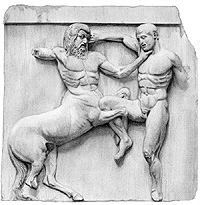
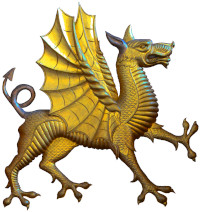
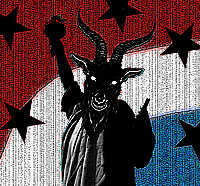
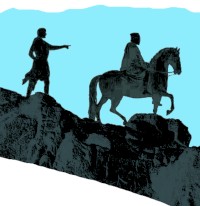
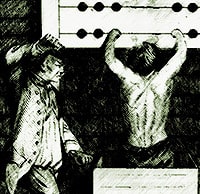
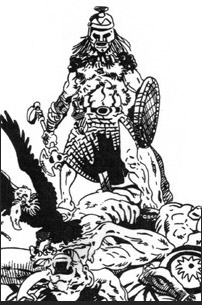


When will White Indians & Yellow Negroes be published?
It will probably end up being published in two 450 page volumes beginning in October. I have a lot more reading to do and the images alone are legion.
This is a journey of discovery for me and the finding of new content might hasten the release of the first volume earlier as I have a 500 page ceiling.
youtube.com/watch?v=j4XmJSL18UM&index=2&list=PLaRAijKJiU9VECgocVHCzsiMGcFbkdR9z
The missing piece in the slavery tableau is provided by Louis Farrakhan. Whatever his and his cause's faults, "The Secret Relationship between the Blacks and the Jews" followed correct revisionist methodology, sourcing information from Jewish writings.
I have not read it, but some of his followers have paraphrased it for me. I will check this out and add the link to the article.
Thanks,
Bob.